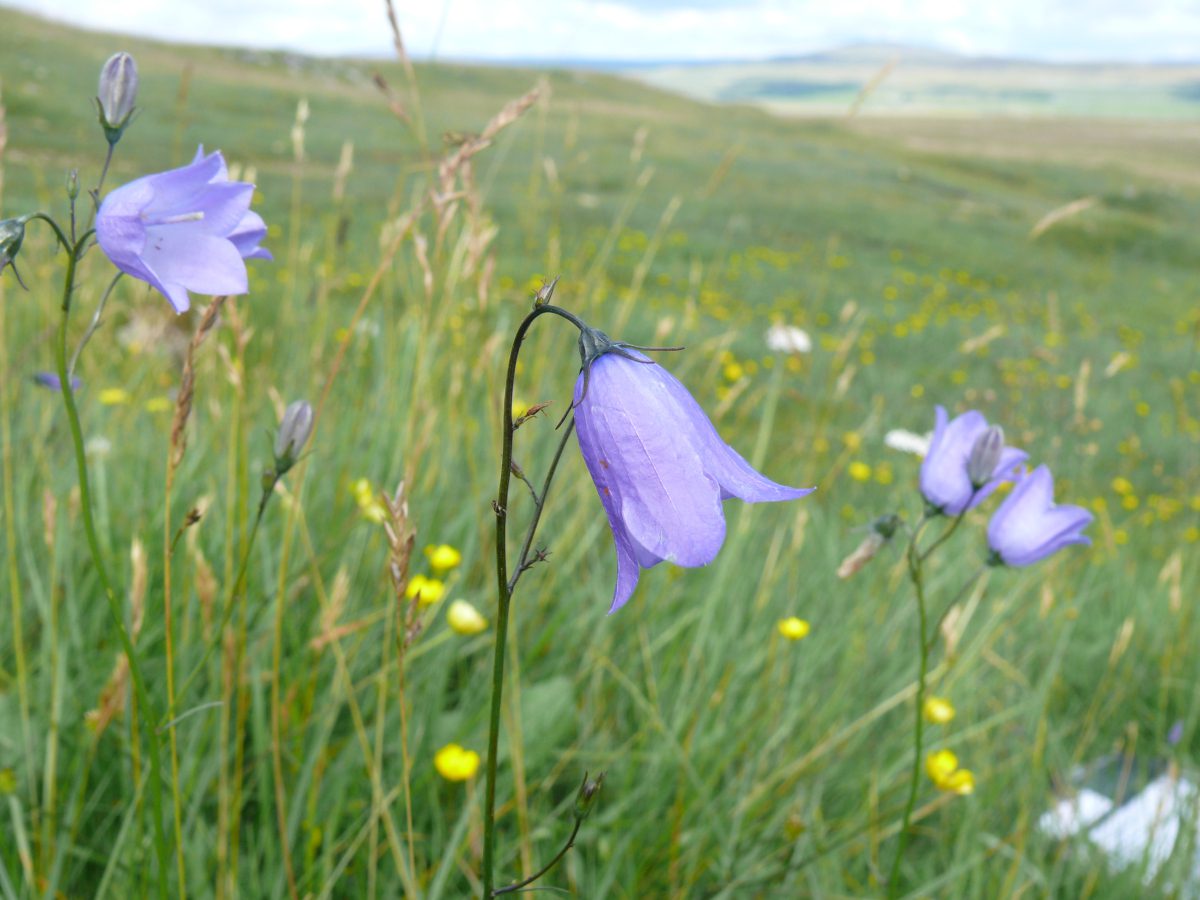
The creators of the new Plant Atlas say it is “the most powerful statement ever produced on the state of our wild and naturalised plants“
Thousands of botanists from the Botanical Society of Britain and Ireland (BSBI)1 have spent the last twenty years collecting data on changes in the British and Irish flora. The results have now been published in Plant Atlas 2020 and four main trends have emerged since the 1950s:
- 53% of our native plants2 such as Heather and Harebell have declined in Britain due to human impacts such as agricultural intensification and climate change
- non-native plants now outnumber native plants in the wild – this startling discovery has huge implications for the insects and other species that depend on our native plants
- many non-native species are benign but some such as New Zealand Pigmyweed and Sitka Spruce have become invasive, disrupting ecosystem function and outcompeting native species
- many montane plants have declined due to climate change whereas some southern species such as Bee Orchid have benefited and spread further north
Plant Atlas 2020 is the most in-depth survey of the British and Irish flora ever undertaken. It builds on two previous Atlas surveys3 undertaken by the BSBI in the twentieth century.
Julia Hanmer, BSBI Chief Executive, says: “Plant Atlas 2020 presents a powerful and concerning insight into the changing distributions of our wild plants. More than 30 million plant records of 3,445 species, collected by almost 9,000 botanists, fed into the Atlas project. The dedication and expertise of our recorders, combined with the in-depth knowledge of scientists at BSBI and BRC/UKCEH4, provides a unique contribution to the evidence base needed to underpin nature recovery and highlights the urgent need for action to ensure that going forwards our wild plants thrive and are valued“.
Many of the habitats our wild plants depend on have been impacted by changes in agriculture since the 1950s. Nitrogen enrichment, habitat degradation and changes in grazing pressure have led to the decline of species such as Heather and Harebell; damp meadows have been drained, leading to substantial declines in plants such as Devil’s-bit Scabious; traditional grasslands have been reseeded or over-fertilised, and consequently 62% of our ancient arable wildflowers such as Corn Marigold have declined.
Climate change is likely to be the primary cause of the declines of some mountain plants such as Alpine Lady-fern, Alpine Speedwell and Snow Pearlwort which depend on areas where the snow lies late in the spring and summer. Peatland habitats will be essential as we strive to combat climate change, but they are being impacted by species such as Sitka Spruce, which is able to regenerate into moorlands and peatlands, reducing their ability to sequester carbon. Sitka Spruce has shown the most significant increase in range of any species recorded for Plant Atlas 2020.
Dr Kevin Walker, BSBI Head of Science and Plant Atlas 2020 co-author, says: “There’s lots we can do to reverse these declines, but the most important are to increase the protection plants receive, extend the habitat available to them, and to place their needs at the very heart of nature conservation5. We also need to ensure that our land, water and soil are managed more sustainably so that plants, and the species which rely upon them for food and shelter, can thrive. Plant Atlas 2020 provides the evidence we need to do this important work, but we’ll need even more research and monitoring6 to help better conserve our wild plants and their vitally important habitats in the decades to come”.
Craig Bennett, chief executive of The Wildlife Trusts7, who helped fund the publication by Princeton University Press of Plant Atlas 2020, says: “The decline of our beautiful native plants is heart-breaking and has consequences for us all. The loss of natural habitats due to modern farming methods over the last 70 years has been an unmitigated disaster for wildflowers and all the species that depend on them including insects, bats and birds. But it’s not too late to stop this catastrophe. The Government’s new farm environment schemes must do what was originally promised and reverse the decline of nature in our agricultural landscape. Also, protection for Local Wildlife Sites needs to be increased, and the promise made by the Government at the recent UN biodiversity summit to halve nutrient pollution by 2030 must be honoured.”
Notes
[1] The Botanical Society of Britain and Ireland (BSBI) is a leading charitable organisation promoting the enjoyment, study and conservation of wild plants in Britain and Ireland. See www.bsbi.org
[2] Of the 3,445 different plant species recorded during Plant Atlas 2020 fieldwork, 1,692 are native to Britain and, notably, 1,753 non-natives were found that have been deliberately or accidentally introduced into the wild by humans. This startling finding means that there are now more introduced plant species growing in the wild in Britain than natives; many of the non-native species originate from gardens and then spread to establish self-sustaining populations.
[3] BSBI published two previous plant distribution atlases, the first in 1962, based on data collected from 1950 to 1960, and the second in 2002, based on data collected from 1987 to 1999. www.bsbi.org/atlas-2020
[4] The Biological Records Centre (BRC) is organised and funded by the UK Centre for Ecology & Hydrology (UKCEH) and the Joint Nature Conservation Committee (JNCC). The production of this atlas was partly supported through Natural Environment Research Council award number NE/R016429/1 as part of the UK-SCAPE programme delivering National Capability.
[5] Plant Atlas 2020 data can help guide land-use management decisions, e.g. BSBI has been working with Natural England through the Natural Capital and Ecosystem Assessment Programme (NCEA) to develop Botanical Heatmaps to inform tree-planting. https://bsbi.org/wp-content/uploads/dlm_uploads/2022/04/BSBI-News-150-pp40-44-tree-planting-heat-maps.pdf
[6] The BSBI is a partner in the National Plant Monitoring Scheme, for which volunteers survey plant species in a range of habitats across the UK. www.npms.org.uk
[7] The Wildlife Trusts describes itself as a grassroots movement of 46 charities with more than 900,000 members and 38,000 volunteers.






